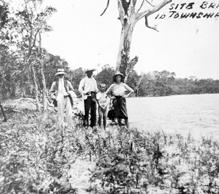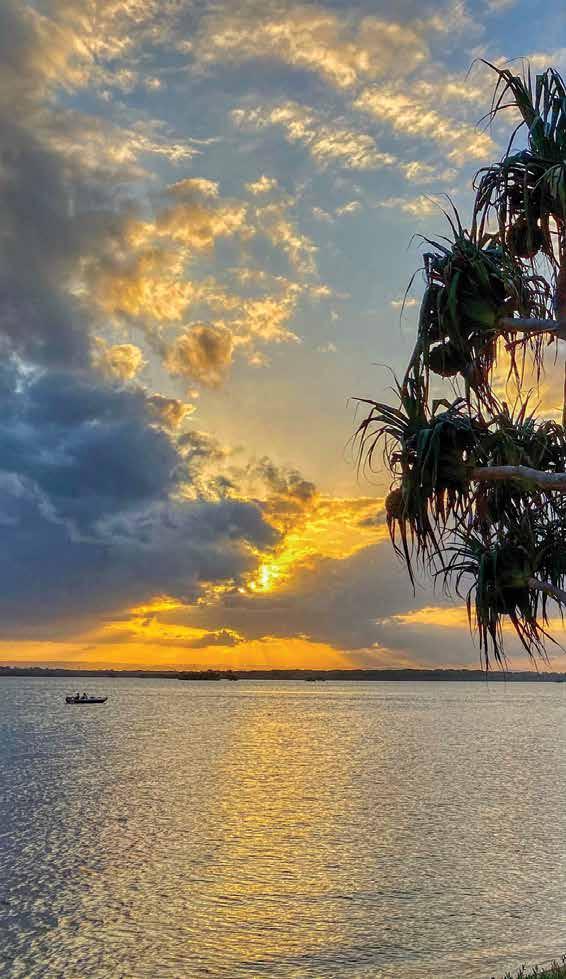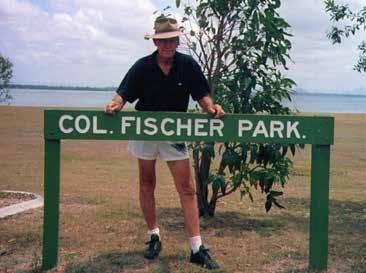
4 minute read
History
PIONEERS OF BANKSIA BEACH

Advertisement
From Isolation To New Modern Suburb..
Barry Clark
Bribie Island Historical Society
THIS ARTICLE IS ABOUT PEOPLE AND EVENTS THAT TOOK BANKSIA BEACH FROM ISOLATION TO A BIG NEW SUBURB. THE NAME BANKSIA RELATES TO JOSEPH BANKS, A YOUNG BOTANIST WHO SAILED WITH CAPTAIN COOK ON HIS JOURNEY OF EXPLORATION IN 1770.
Although well off the coast sailing past here, street names include Solander, Banks assistant, Elizabeth Batts, Cooks wife who lived to the age of 94, and Endeavour, their ship. The first explorer Matthew Flinders repaired his sloop Norfolk at White Patch in 1799 and camped with the aboriginal inhabitants. Eighty years later few remained, and they were placed in a government reserve at White Patch, where they had a ceremonial Bora Ring, later destroyed by developers. About 1898 the government gazetted land there for a new settlement to be called the Town Of Bribie. However, it did not eventuate as a private tug company built a jetty at Bongaree in 1912, running steamships from Brisbane, leaving Banksia Beach very isolated. The only person to come to Banksia Beach in the 1890s was Gustav Gux, a Prussian migrant who lived on the Caboolture River, who came to catch many big mud crabs, in what we now call Dux Creek. In 1913 the whole Banksia Beach area was acquired by Harry Wright, Secretary of the Licensed Victuallers Association in Brisbane. He must have seen the potential business opportunity and growth for Bribie and built a house named “Mountain View”, south of Wrights creek which was later named

for him. He sold this large parcel of land to the Landells family in 1925, who had been missionaries in Samoa. In a letter to their son at the time, they told proudly told him they “had acquired the largest
piece of freehold land on Bribie Island.”
The land was between Dux Creek and Wrights Creek but proved totally unproductive and largely swamp. They eventually sold it in 1933 for 260 Pounds (A$ 490) which was less than they had paid for it. This extensive area is now Pacific Harbour canal development. away shearing, while Phyllis remained isolated in their waterfront cottage, growing her own food and keeping Dingos away from their cattle grazing over hundreds of acres. Mango trees she planted can still be seen along the foreshore at Banksia beach. In the early 1970s, Ted Howard bought land from Sunderland for a residential subdivision around the landlocked Solander Lake. A road was constructed from Bellara, all around the extensive Dux Creek, to the foreshore at Banksia beach, and residential land was offered for sale. The aerial photos show the road, Sunderland Drive, built to Banksia Beach in 1979. The extensive lake and watercourse land progressively became the major residential canal and golf course development known as Pacific Harbour, with the main canal entrance cut through to Dux Creek. An early resident of the new Banksia Beach subdivision their retirement home, near the Sunderland’s. They were keen gardeners and created a spectacular garden that won Caboolture Shire “Garden of the Year” six times. Col Fisher also created extensive public foreshore gardens and built the lost to development over the years, and I am sure Gustav Dux, Harry Wright and Lavinia Lindsay could not have imagined the thousands of residents who now live in today’s big modern sprawling suburb.

Mountain View

They sold to Lavinia Lindsay, a lady who lived next door to Jimmy-no-legs Hagan at Bongaree. She bought the property during the Depression to support her family by grazing cattle, growing vegetables and fishing. Her granddaughter recently contacted us with Photos and her fascinating life story. The only access to Banksia beach all this time was by boat. The next residents of Banksia Beach were Harry and Phyllis Sunderland who came in 1945. Harry was a shearer who spent many months
Lavinia Lindsay
Col Fischer at Park
Glasshouse Mountains, replica models. The area was named Col Fisher Park in his honour, and prior to his death in 2013 at the age of 94, his book of memories was launched by Bry at the Historical Society. Banksia beach had extensive wildflowers and was home to many local and migratory birds, and Kakadu Wading Bird Reserve at the mouth of Dux Creek reflects this. Much natural flora and fauna have been
MORE BRIBIE HISTORY
The next Historical Society meeting will be Wednesday 13th April at 6;30 pm at the RSL Club. We have excellent guest speakers and visitors are always welcome. See more on our new Web Site










